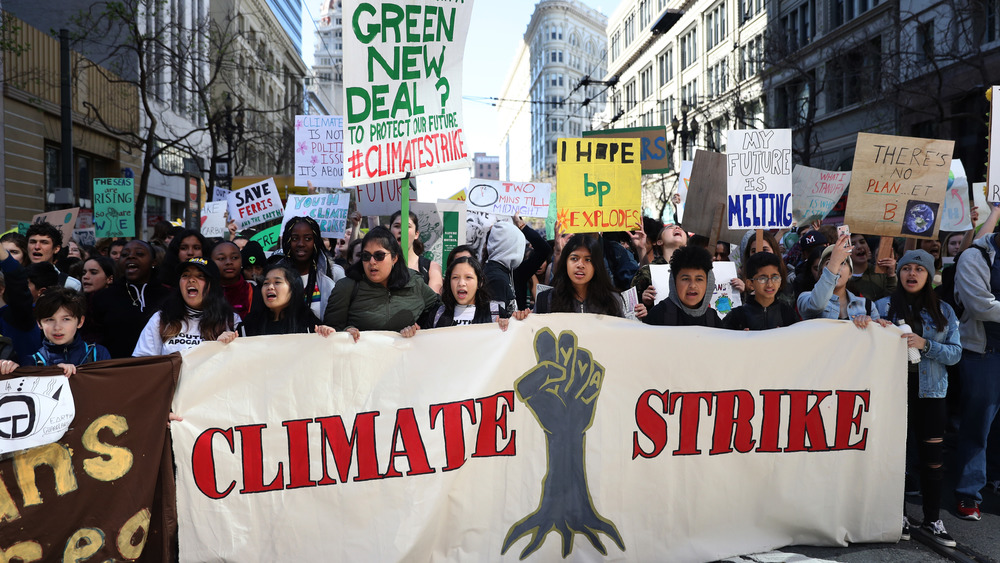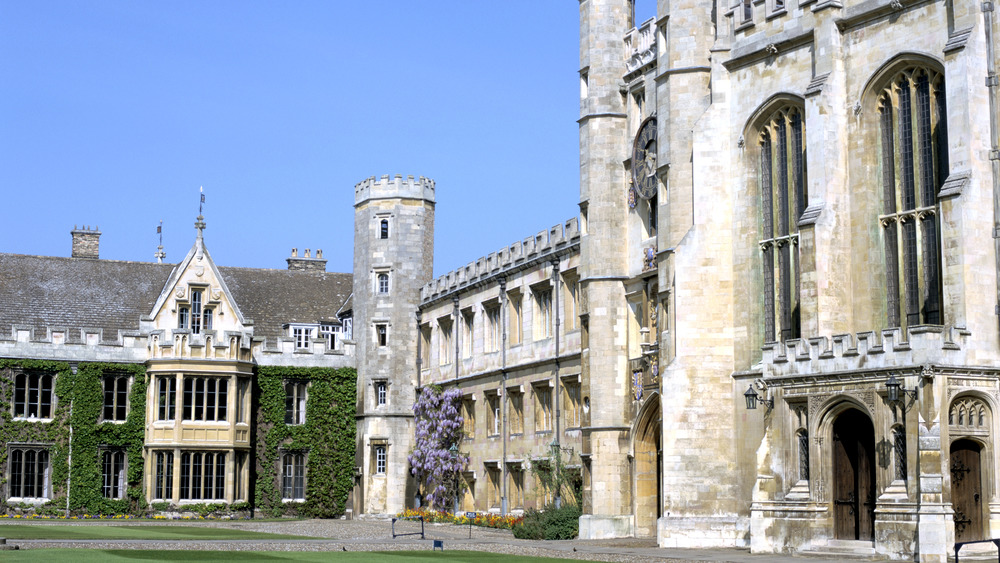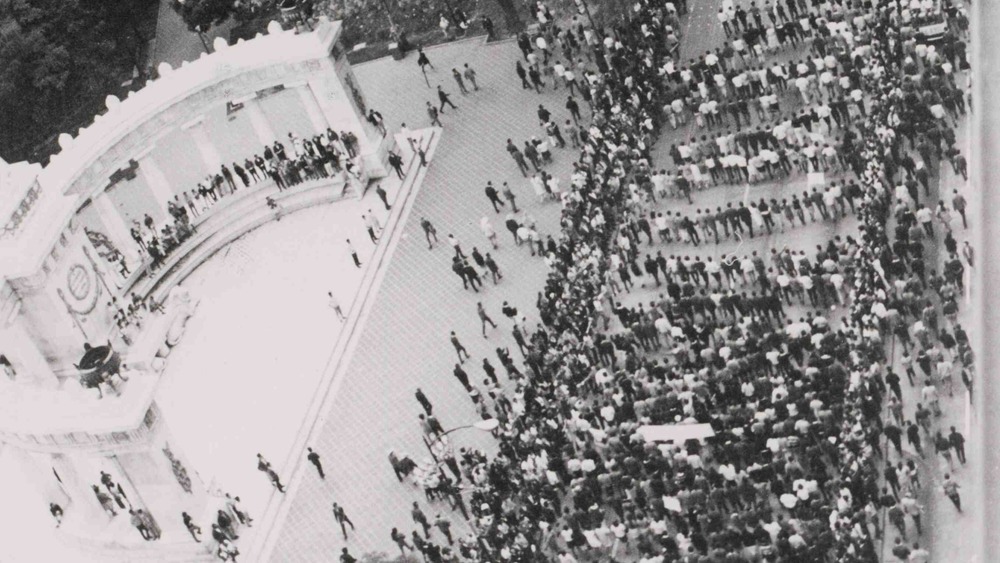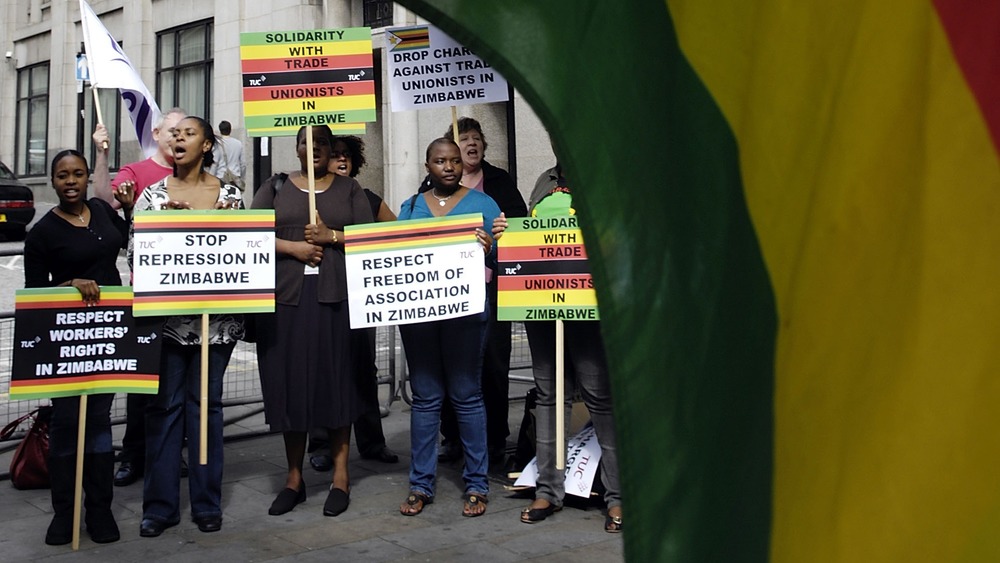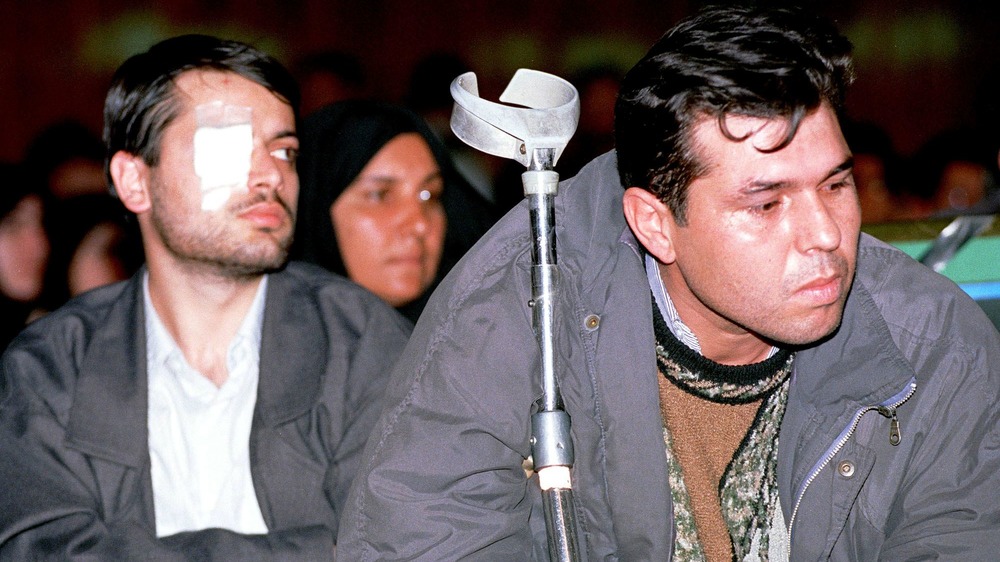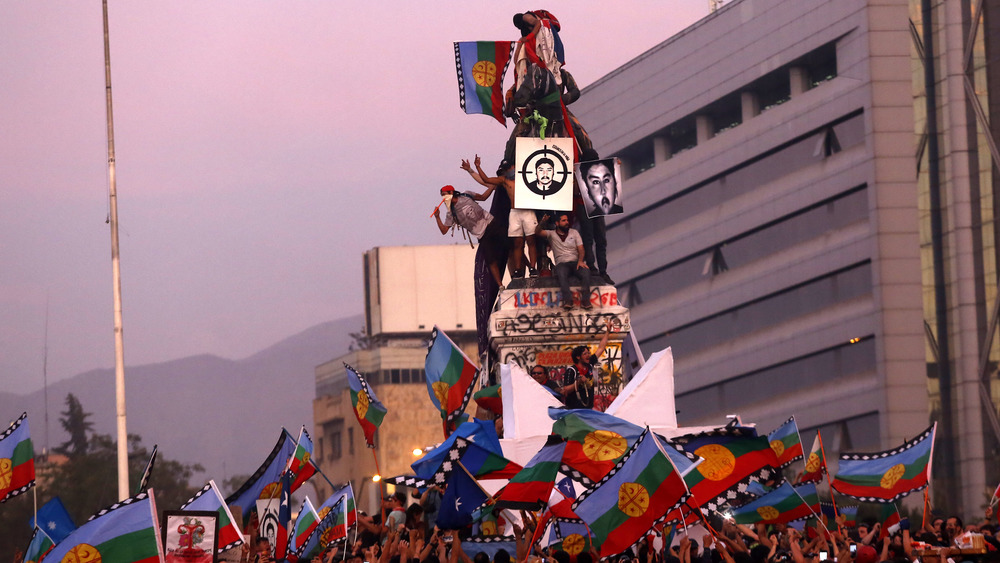The Strangest Student Protests In History
As long as there have been students, there have been student protests, but the reasons that students protest are as varied as students themselves. Sometimes they protest for more rights for everyone, sometimes they protest for fewer rights for some.
Almost every country from New Zealand, as Reuters reported, to the United States of America has witnessed their students protesting. And few protests can be described as ineffective. Even if the effects are gradual, student protests often find themselves changing the world more than they may realize at the time.
The different ways that a country responds to its student protests says a great deal more about the country's leadership than it says about the students, and unfortunately, many student protests have ended in avoidable tragedy. But as long as there are students, they will continue to protest for what they believe in. Here are some of the strangest student protests in history.
Men students against women studying
Not all protests are progressive. In 1897, writes the BBC, when Cambridge University voted on whether or not women were allowed to earn degrees, the men who were students had a fit. And according to Britain Magazine, those who campaigned for the acceptance of women students were "often being pelted with eggs or risking being hit by rogue fireworks."
Varsity relates that the resolution was defeated with 1,707 votes opposed and 661 votes in favor. As a celebration, the men who were protesting the inclusion of women students tore down an effigy of a woman on a bicycle and decapitated it. For many of the men studying at Cambridge, "the lady cyclist in her rational costume was a readily recognised symbol of the new woman whose entrance into higher education" was incredibly resented.
Apollo Magazine reports that in 1921, there was another vote, at which point women were finally allowed to earn degrees at Cambridge University. And in 1924, Katharine Margaret Wilson became the first woman to complete a PhD at Cambridge.
The struggles of the Movimiento Estudiantil
An article posted by Eastern Illinois University tells us that in the summer of 1968, students from across Mexico came together to protest the PRI's authoritarian government. Their demands included the release of political prisoners, repealing penal codes that limited free press and speech, and the dissolution of the granadero (government police force), among others. The Global Nonviolent Action Database notes that "these specific demands were part of a larger demand for a more open and democratic government."
Meanwhile, says the Marxist.com website, the army occupied the UNAM campus on September 18th, the Polytechnic's Casco de Santo Tomás campus on September 23, and the Polytechnic's Zacatenco campus on September 24. "The death count isn't clear — and those murdered were surely not only students."
The Zinn Education Project website and the National Security Archive tell of the massacre of Tlatelolco on October 2, the government's final act of repression. As 10,000 high school and university students gathered in the Plaza de las Tres Culturas, undercover police started shooting into the crowd. This death toll is also unclear, but at least 500 people were killed, 2,000 were injured, and countless were disappeared.
Resisting a dictator
In September 1988, students from the University of Zimbabwe organized a mass demonstration against government corruption. And after it was revealed a few months later that Zimbabwean cabinet ministers were buyings cars and reselling them with absurdly high markups, sometimes, as the LA Times reports, as high as $30,000, the protests only accelerated, per The Conversation.
Associated Press reports that by October, the protests were also concerned with the "police brutality against anti-government demonstrators" as well as the deportation of Shadrack Gutto, a Kenyan-born lecturer. In the end, the protests ended up lasting two years and according to the African Sociological Review, many of the student leaders ended up imprisoned at Chikurubi, a maximum security prison.
President Mugabe's government was finally forced by the continuous protests to affirm "the legality of multiple parties" in 1990, says the Global Nonviolent Action Database, and although it took several years for a strong opposition party to emerge, "Zimbabwe was permanently changed." Unfortunately, according to University World News, in response to the protests that "forced him to abandon his plans to declare Zimbabwe a one-party state," President Mugabe implemented restrictive legislation directed at the university.
Protesting for the press
On July 8, 1999 (with footage posted to YouTube), Refworld tells us that roughly 200 students from Tehran University started peacefully demonstrating against the closure of the reformist newspaper Salam. That night around midnight, according to Radio Free Europe, plainclothes police and paramilitary forces invaded the dormitories, breaking windows, students' belongings, and setting fire to beds.
Radio Farda says it's unclear how many people were killed during the raid, but the action only sparked more protests. Demonstrations across the country lasted for six days, spreading across universities and extending outside of universities, with estimates of the crowds ranging from 5,000-10,000 at larger demonstrations, although there were many smaller ones.
Islamic militias and riot police repeatedly attacked demonstrators with batons and tear gas. By Saturday, July 17, a group of student leaders from various universities came together to call for an end to the demonstrations, stating that over 1,000 people had already been arrested. After the protests, at least 77 additional students were disappeared, says Human Rights Watch, and the death count, according to Middle East Eye, was thought to be seven.
A fire from a spark
In October 2019, high school students in Chile started protesting an increase in the subway fare. Before long, the mass fare evasion protests turned into something bigger, calling out against "growing inequality and the dictatorship-era constitution," reports Al Jazeera.
A state of emergency was imposed and the army took control over major cities, per Dissent Magazine. And on October 25th, says another Al Jazeera report, over one million Chileans came out into the streets of Santiago, demanding President Pinera's resignation.
One month later, in November, Chilean political parties yielded and agreed to allow a referendum that would decide whether or not to replace Chile's constitution, which was created during the Pinochet dictatorship, reports The Guardian. Between October 2019 and February, 2020, over 30 people died during the protests, and Amnesty International recorded multiple instances of human rights abuses by security forces.
But on October 25, 2020, over one year after the protests started, Chileans voted in favor of a new constitution. Reuters reported that over 7.5 million people voted, the largest turnout since voluntary voting was adopted in 2012, with 78 percent voting in favor. And many continue to question whether or not neoliberalism, which was born in Chile, will die in Chile, as Spring Magazine writes.
